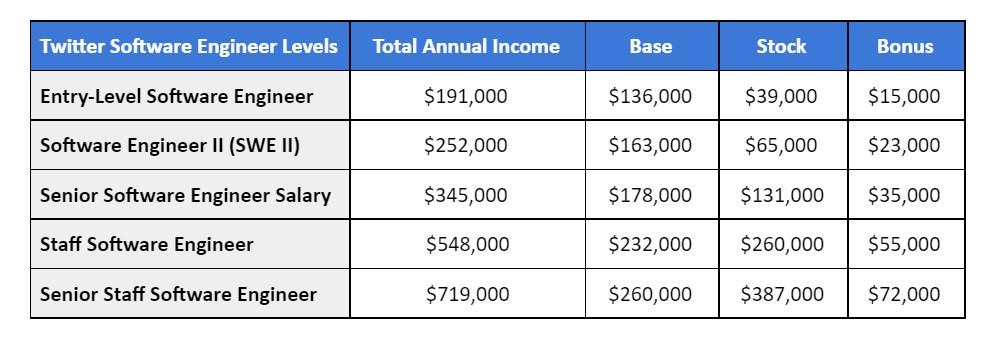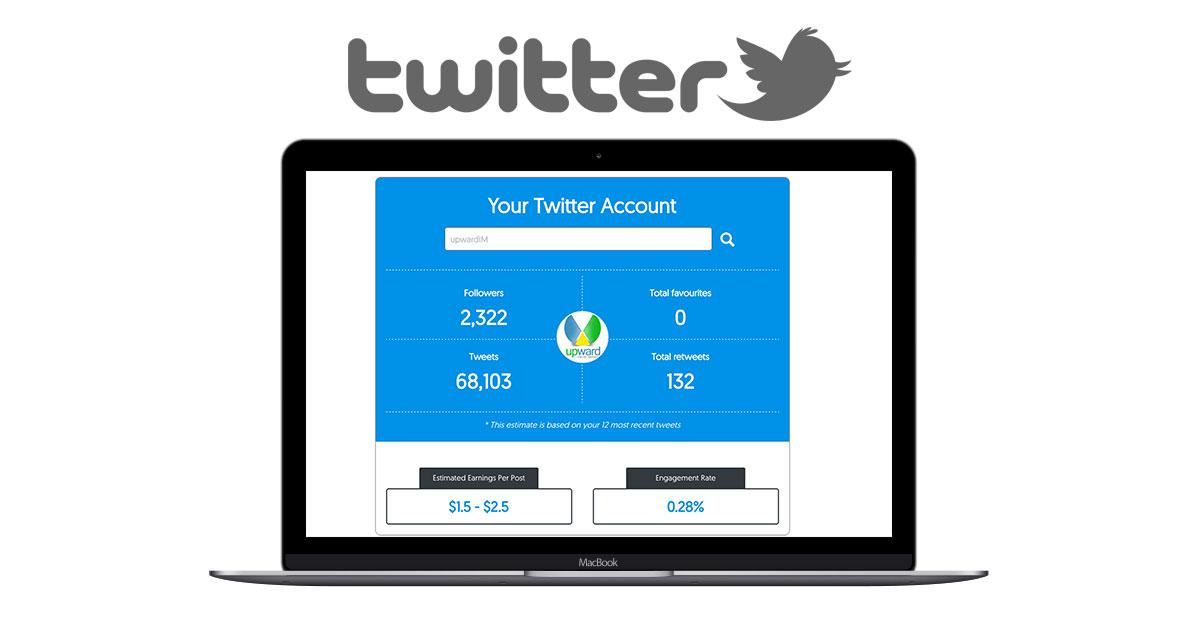Have you ever wondered how much money Twitter makes or how much it pays employees, advertisers, and content creators? As one of the biggest social platforms, Twitter generates billions in revenue annually. But how do those funds get distributed?
In this comprehensive guide, I’ll provide a full overview of how much does Twitter payout across its different business segments, including:
Table of Contents
Twitter Company Financials
- Twitter’s annual revenue
- Key revenue sources
- Profit vs. losses
- Stock and valuation
Twitter Employee Compensation
- Salaries for engineers, designers, managers
- Equity and stock options
- Benefits and perks
Advertising Earnings on Twitter
- Ad rates and auction process
- Advertiser payouts per engagement
- Top Twitter ad partners
Twitter Creator and Publisher Payments
- Revue newsletter platform rates
- Monetization for audio spaces
- Partner programs and influencer earnings
By the end of this guide, you’ll have a solid understanding of Twitter’s overall business revenue and how those funds get distributed to pay employees, advertisers, creators, and partners on the platform. Let’s get started!
Twitter Company Revenue, Profits, and Market Value
First, to understand how Twitter makes money and where those funds eventually go, we need to examine the company’s overall financial position. How much revenue does Twitter generate? Is the company currently profitable? What is Twitter worth as a business?
Twitter’s Total Annual Revenue
For the full year 2021, Twitter reported a total annual revenue of $5.08 billion. This was a 37% increase from their 2020 revenue.
The company has continued on a path of accelerated growth, with 2022 revenue projected to exceed $6 billion.
Breakdown of Twitter’s Revenue Sources
Twitter’s revenue comes from 3 main business segments:
- Advertising: 89% of revenue. Promoted tweets, trends, accounts, videos, etc.
- Data Licensing: 11% of revenue. Paid access to Twitter data by partners.
- Other: 1% of revenue. Miscellaneous sources.
So, the substantial majority (nearly 90%) of how Twitter makes money comes from serving ads across its platform.
Is Twitter Profitable?
For most of Twitter’s existence, the company lost money or barely broke even each year.
However, thanks to accelerated monetization efforts, Twitter achieved profitability for the first time in 2020 and has remained profitable since.
- 2020 net income profit: $1.14 billion
- 2021 net income profit: $5.08 billion
Twitter’s Market Valuation
As a publicly traded company, Twitter’s market capitalization reflects the total market value of its shares outstanding.
Twitter’s current market cap: $30 billion
For context, Twitter’s highest-ever market valuation was nearly $80 billion shortly after its IPO. The company’s value has fluctuated based on user growth, revenue, and regulatory factors.
Now that we’ve examined Twitter’s financial position as a business, next, let’s look at how much Twitter pays its employees in salary and stock-based compensation.
How Much Does Twitter Pay Its Employees?
From software engineers to product designers, how much does Twitter pay its over 7,500 global employees? Let’s examine typical Twitter salaries.
Twitter Software Engineering Salaries

Software engineers represent Twitter’s largest personnel expense. Average compensations include:
- Entry-level engineer – $136,000 base salary + standard equity packages
- Software engineer – $163,000 base salary + equity options
- Senior engineer – $178,000 base salary + increased equity
- Engineering manager – $250,000 base + equity + larger bonuses
Engineers who progress into technical/team leadership roles or staff positions can earn $300-500K in total compensation.
Twitter Product Designer Salaries
User experience and product designers are also compensated competitively:
- Associate designer – $130,000 base salary
- Product designer – $150,000 base salary
- Senior designer – $180,000 base salary
- Design managers – $220,000+ base salaries
Bonus amounts, equity, and incentive pay can add another 50-100% onto base compensations for designers.
Salaries For Other Twitter Roles
Besides technical roles, average pay at Twitter includes:
- Marketing: $120-180K for managers
- Sales: $100-200K base salaries
- HR/Recruiting: $80-150K ranges
- Finance: $110-250K total pay
- Legal: $250K+ for counsel and above
- Admin: $70-90K salaries
Competitive pay enables Twitter to attract top talent in the crowded Bay Area market for tech professionals. Next, let’s look at the perks and benefits.
Twitter Employee Perks and Benefits
In addition to salaries, Twitter provides the following noteworthy perks and benefits to employees:
- Health insurance – 3 high-quality medical plan options, dental, and vision. Twitter covers 100% of premiums.
- Equity compensation – RSU stock awards or stock option plans help share company upside.
- 401K match – Twitter provides a 100% match up to 6% of salary.
- Flexible vacation – Employees get unlimited vacation time.
- Parental leave – 20 weeks maternity and 10 weeks paternity leave provided.
- Wellness allowance – $500 per employee annually for wellness activities.
- Commuter benefits – Pre-tax options for parking, transit, and biking to work.
- Catered lunches – Free gourmet business lunches are provided daily.
- Work from home – Remote work options are available for most roles.
Strong pay and perks make Twitter a desirable workplace for talented tech professionals despite periods of turmoil.
Next, let’s examine how Twitter makes money from advertisers on the platform.
How Much Does Twitter Pay for Advertising, and Who Earns the Most?
Advertising makes up the bulk of Twitter’s business revenues. But how much does Twitter actually charge for promoted tweets and accounts? Let’s take a look at Twitter ad rates and payouts.
Twitter Advertising Costs and Auction Process
Instead of fixed ad pricing, Twitter uses a second-price auction process for charging advertisers:
- Advertisers bid a maximum cost per engagement (CPE) they’re willing to pay.
- When shown, the advertiser only pays $0.01 above the second-highest bidder’s max.
- Pricing, therefore, adjusts dynamically based on competition.
Higher demand and engagement typically lead to higher realized ad prices.
Average Costs Per Twitter Ad Engagement
While dynamic, average Twitter ad costs tend to run in the following ranges:
- Promoted Tweet: $0.50 – $2 average CPE
- Promoted Trend: $2 – $3 average CPE
- Promoted Account: $0.75 – $1 average CPE
- Video Views: $0.10 – $0.30 avg CPV
Factors like targeting, engagement levels, and category demand impact pricing.
Twitter’s Top Advertising Partners
The companies spending most on Twitter ads include:
- Google – $710+ million in 2021
- AT&T – $590+ million
- Verizon – $350+ million
- Disney – $240+ million
- Pepsi – $210+ million
Hundreds of millions per year are spent by major brands promoting content on Twitter.
Besides big-name brands, Twitter ads also commonly promote:
- Media outlets driving traffic to articles
- Tech companies boosting developer ads
- Streaming services like Netflix promote new releases
- Political organizations and advocacy
Now, let’s look at the monetization options Twitter provides for creators on the platform.
How Much Can Twitter Creators and Publishers Earn?
Beyond employees and advertisers, Twitter also provides monetization opportunities for creators directly through the platform:
Twitter Newsletters Through Revue
- Twitter acquired the newsletter platform Revue in 2021.
- Writers can publish paid newsletters with subscriber tiers.
- Revue lets writers keep 100% of revenue minus fees:
| Tier | Revue Fee |
|---|---|
| Free | 6% fee |
| Pro | 5% fee |
| Premium | 4% fee |
Higher-volume writers can earn thousands per month through paid Twitter newsletters.
Twitter Audio Spaces Monetization
- Live audio room sessions can generate revenue.
- Hosts keep 100% of listener tips.
- Ticketed Spaces let hosts charge access fees.
- Top hosts produce consistent income via Spaces.
Twitter Influencer and Affiliate Programs
Besides its tools, Twitter facilitates monetization via:
- Affiliate links in bios and posts.
- Sponsored tweet partnerships.
- Promoting third-party apps and services.
- Ad revenue sharing for qualifying accounts.
Influencers can leverage their audience and engagement on Twitter to generate incremental revenue through a mix of direct and third-party opportunities.
Key Takeaways on How Much Twitter Pays Out
To recap, the key points on how much Twitter pays employees, advertisers, creators, and partners include:
- Twitter earns $5+ billion annually, mostly from ads. Profits now surpass $1 billion.
- Engineers can earn $250K+, designers $150-200K, and other roles from $70K-$250K.
- Advertisers pay, on average, $1-$3 per engagement, up to hundreds of millions yearly.
- Creators monetize via Revue newsletters, Spaces, affiliates, sponsorships, and more.
- Competitive pay enables Twitter to attract talent and fuel its ecosystem.
Understanding these monetization dynamics provides helpful context into how Twitter operates as a business and where its revenues ultimately flow at scale.
How Much Does Twitter Pay Creators and Users?
Beyond monetization tools, Twitter provides direct monetization opportunities for some creators and power users:
Twitter Partner Program
- Elite, high-reach accounts can join the Twitter Partner Program.
- Partners earn a cut of ad revenue from their tweets and content.
- Top partners can earn thousands per month from the program.
Twitter Funds for Creators
- Twitter’s #BlackContentCreator and #LatinxCreators funds award grants to creators from underrepresented communities.
- Grantees receive $2,500 or $10,000 for their work and contributions.
- Twitter has awarded millions in grants to date.
Tip Jars for User Tips
- Users can enable Tip Jars on their profiles to collect monetary tips.
- 100% of tips go directly to the user; Twitter does not take a cut.
- While small amounts, tips provide some monetization for non-ad accounts.
Super Follow Creator Subscriptions
- Writers, influencers, and experts can offer paid Super Follows subscriptions.
- Twitter takes 3% of the subscriber revenue.
- Super Follow creators keep 97% of the subscription fees paid by their followers.
In summary, beyond brand sponsorships, Twitter provides qualifying users and creators various ways to monetize their audience and content via the platform itself directly.







